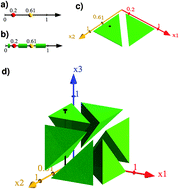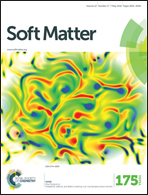Upper bound on the Edwards entropy in frictional monodisperse hard-sphere packings
Abstract
We extend the Widom particle insertion method [B. Widom, J. Chem. Phys., 1963, 39, 2808–2812] to determine an upper bound sub on the Edwards entropy in frictional hard-sphere packings. sub corresponds to the logarithm of the number of mechanically stable configurations for a given volume fraction and boundary conditions. To accomplish this, we extend the method for estimating the particle insertion probability through the pore-size distribution in frictionless packings [V. Baranau, et al., Soft Matter, 2013, 9, 3361–3372] to the case of frictional particles. We use computer-generated and experimentally obtained three-dimensional sphere packings with volume fractions φ in the range 0.551–0.65. We find that sub has a maximum in the vicinity of the Random Loose Packing Limit φRLP = 0.55 and decreases then monotonically with increasing φ to reach a minimum at φ = 0.65. Further on, sub does not distinguish between real mechanical stability and packings in close proximity to mechanical stable configurations. The probability to find a given number of contacts for a particle inserted in a large enough pore does not depend on φ, but it decreases strongly with the contact number.

- This article is part of the themed collection: Open access articles from Soft Matter


 Please wait while we load your content...
Please wait while we load your content...